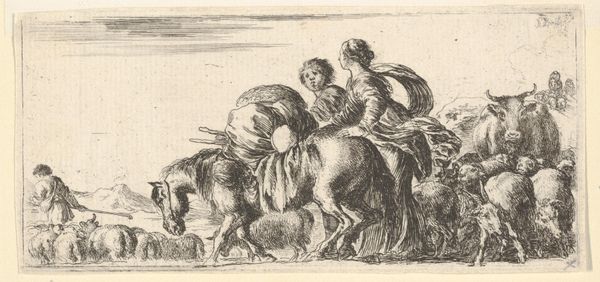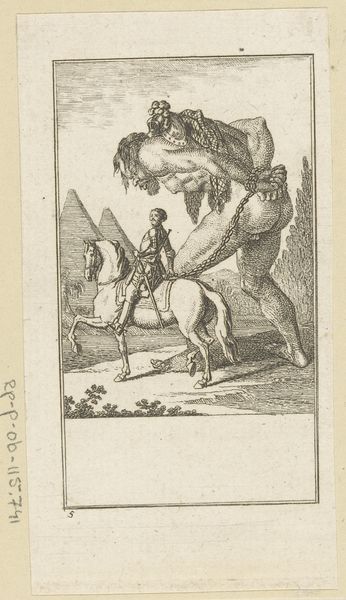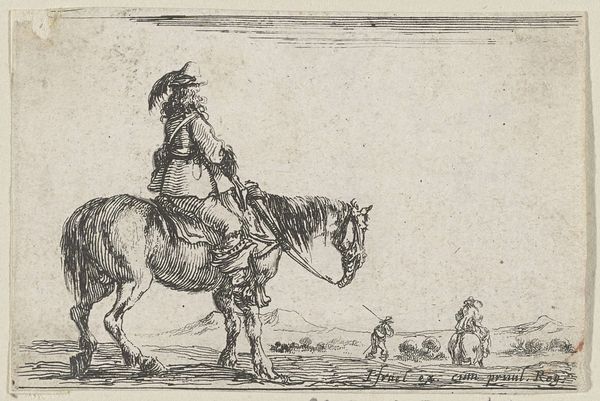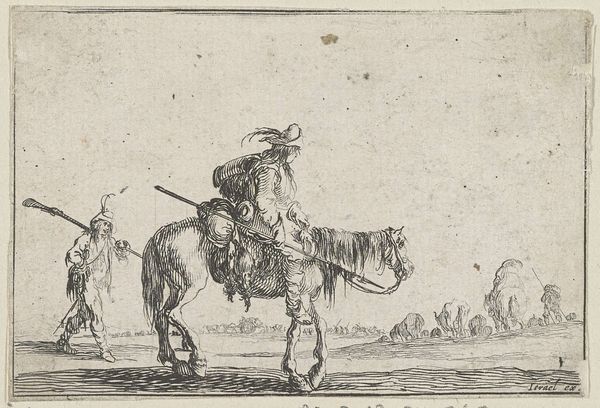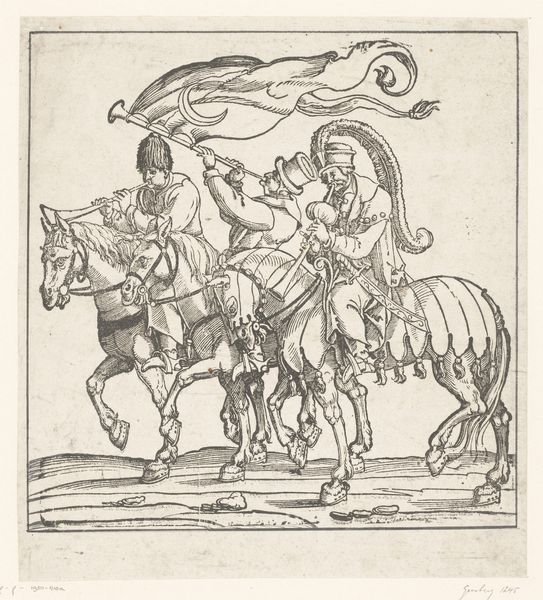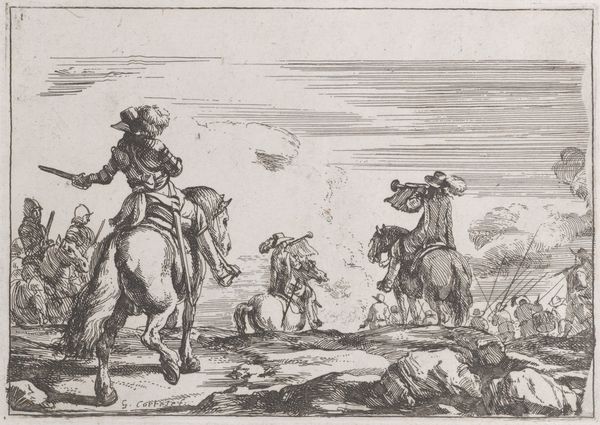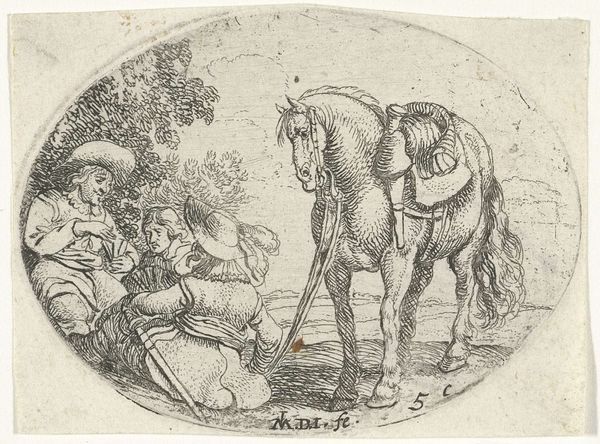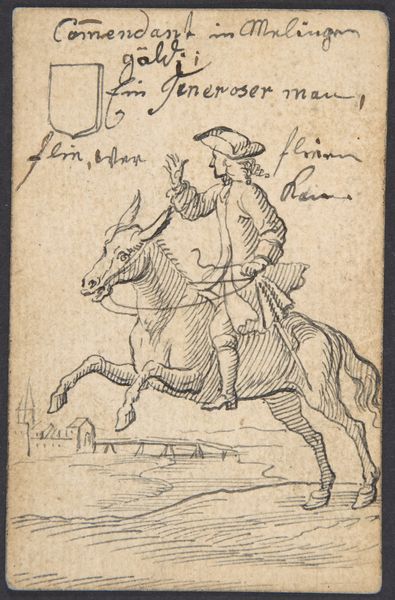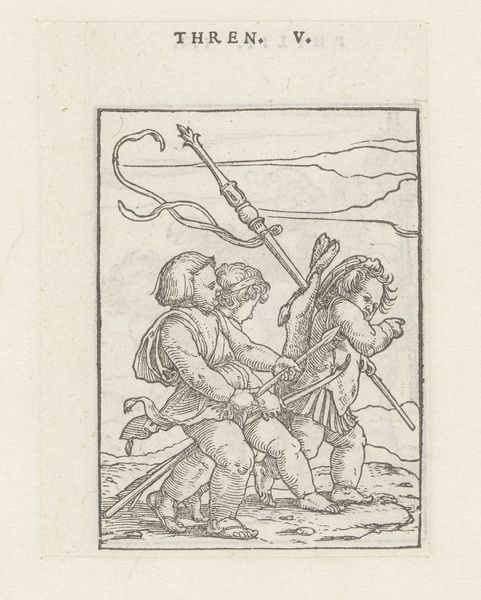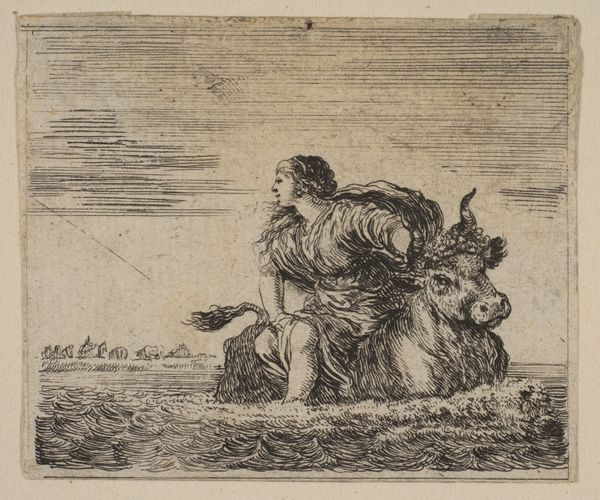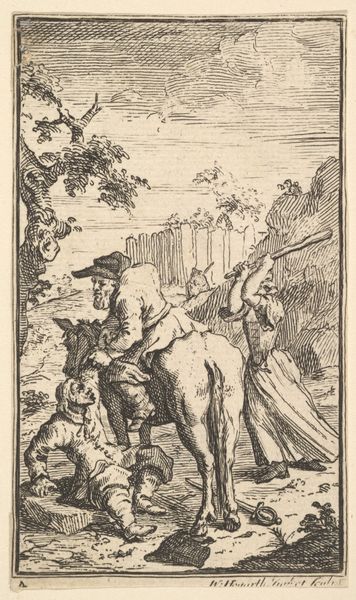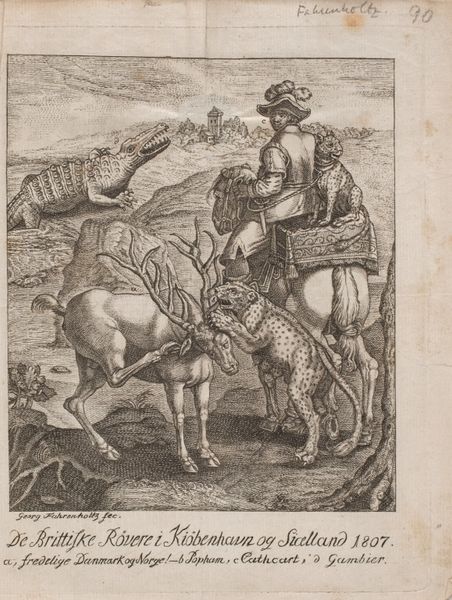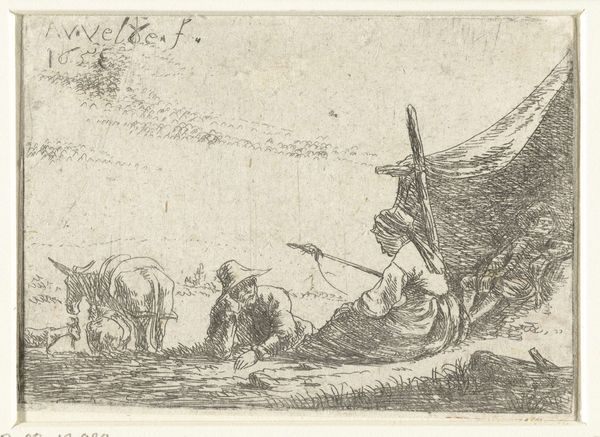
print, engraving
#
medieval
#
narrative-art
#
dutch-golden-age
# print
#
line
#
sketchbook drawing
#
history-painting
#
engraving
Dimensions: height 41 mm, width 65 mm
Copyright: Rijks Museum: Open Domain
Dirck de Bray made this woodcut, "Flight to Egypt", in the Netherlands sometime in the 17th century. It depicts Mary and the infant Jesus escaping Herod’s decree to murder all male children in Bethlehem, as Joseph leads the donkey. Look closely at how the image creates meaning through visual codes. The pyramidal composition, the use of light and shadow, and the figures' expressions all contribute to the scene's drama. The Netherlands at this time was a Protestant country, so religious imagery was not as common as it was in Catholic countries. In the 17th century, the Dutch Republic was a major economic and cultural power and the art market was booming, meaning this print would have likely been sold as a commodity. We can better understand this artwork by looking at the social conditions in which it was made. Consider the role of religious institutions in shaping artistic production, and how artists responded to those institutions. Researching the history of the print market and the social status of artists can also shed light on the meaning of this work.
Comments
No comments
Be the first to comment and join the conversation on the ultimate creative platform.
